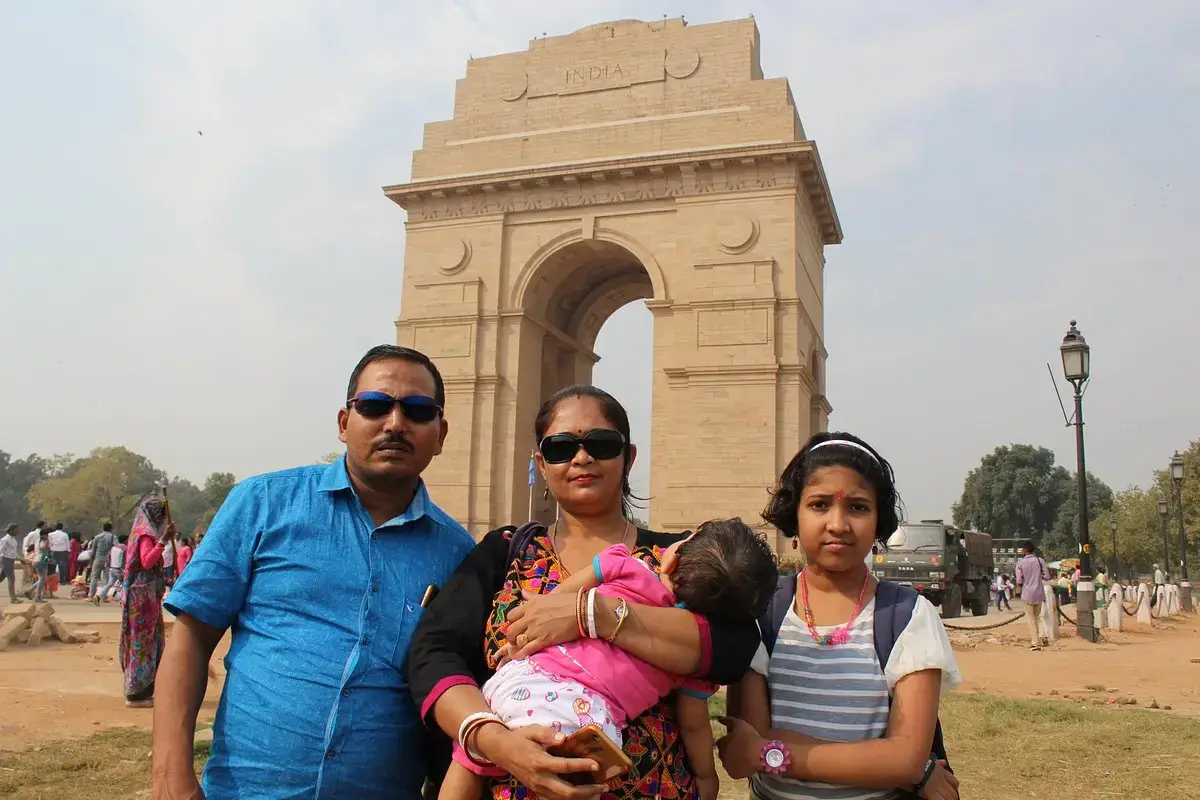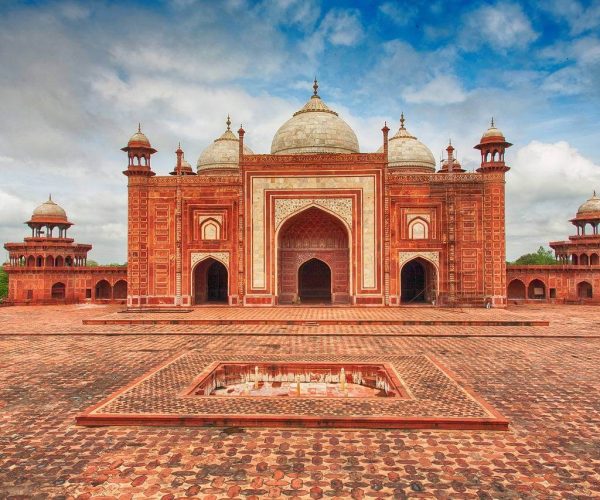The capital of India is unique and attractive for numerous reasons. One of the prime ones is its iconic monuments, a significant part of the city’s history and heritage. These unique monuments and sites are substantial parts of history that shaped the city we see today.
In this blog, we have listed the iconic monuments which are a must to know when you are in Delhi.
Qutub Minar
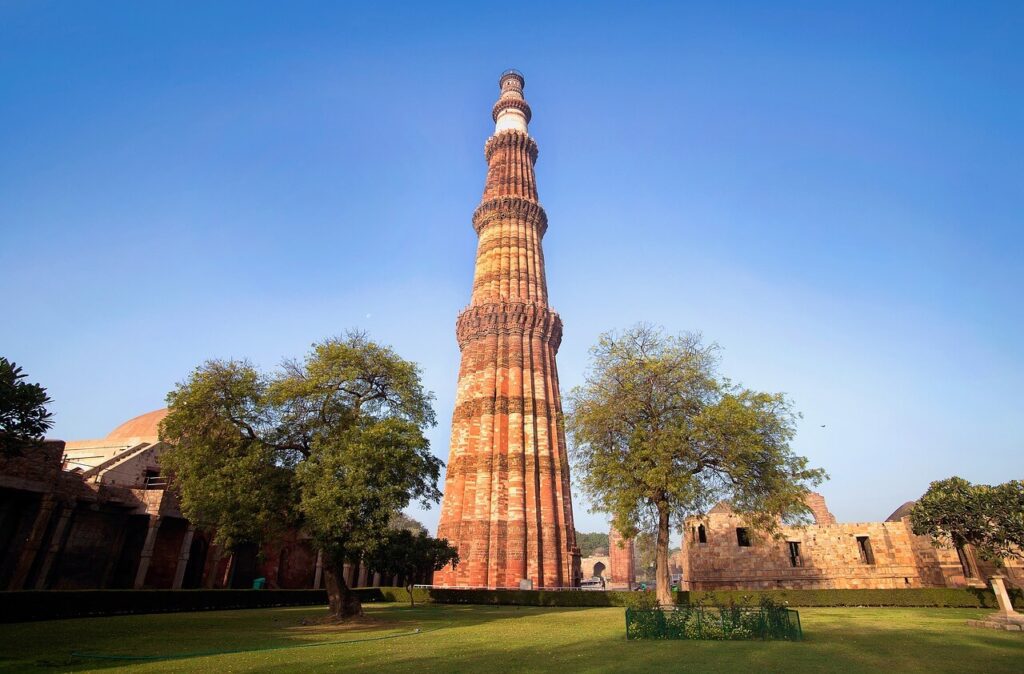
The Qutub Minar is an iconic minaret in South Delhi. It is also a popular tourist attraction for domestic and international tourists. The 72-meter tall minaret was built to signify victory in a battle against Hindu rulers.
The minaret is built beautifully in Islamic and Southwestern Asian design. This UNESCO World Heritage Site has stories of different rulers who built it.
Founded by the Tomar Rajputs, Qutub Minar was built by Qutb-ud-din Aibak and was finished by Itlutmish. Qutub Minar is so prime that it has become one of the destinations on every New Delhi tour itinerary.
India Gate
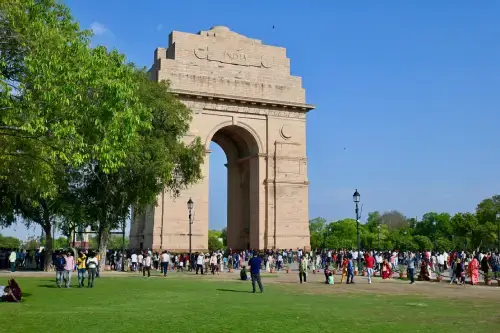
India Gate is an admiration of every Indian. The All India War Memorial speaks volumes about the courage and sacrifice Indian soldiers gave under colonial rule. The war memorial is dedicated to more than 70,000 Indian army soldiers who laid their lives in wars.
Edwin Lutyens designed the iconic landmark in the Triumphal Architecture. It is an iconic landmark in the city and is visited by many tourists. The design of India Gate resembles that of the Arc de Triomphe in Paris, France.
Red Fort
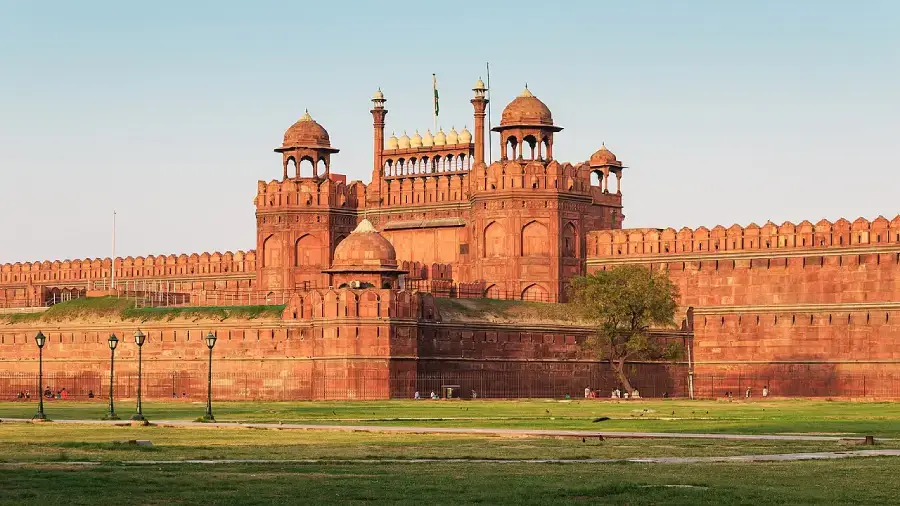
The Red Fort (also called ‘Laal Qila’) is a UNESCO World Heritage Site in Old Delhi and one of the city’s most popular tourist destinations.
The beautiful Red Sandstone fort is built in Mughal Architecture, blending Hindu and Persian design elements. It is a vast fort commissioned by Shah Jahan when he shifted his capital from Agra to Delhi.
Ustad Ahmad Lohri designed the Red Fort and the Taj Mahal (in Agra). The fort’s entry gates, complexes, and structures are magnificent, with intricate marble work and designs on walls and ceilings. It reminds me of the times when Emperors used to rule in India.
A tour of Red Fort is a wholesome experience in itself. Post-independence in 1947, the Indian Prime Minister unfurls the Indian Tricolor on every Indian Independence Day.
Some other must-see structures in Red Fort are –
- Lahori Gate
- Delhi Gate
- Naubat Khana
- Diwan-i-Aam (Audience hall for the general public)
- Diwan-i-Khas (Audience hall for private audience)
- Moti Masjid
- Hira Mahal
Connaught Place
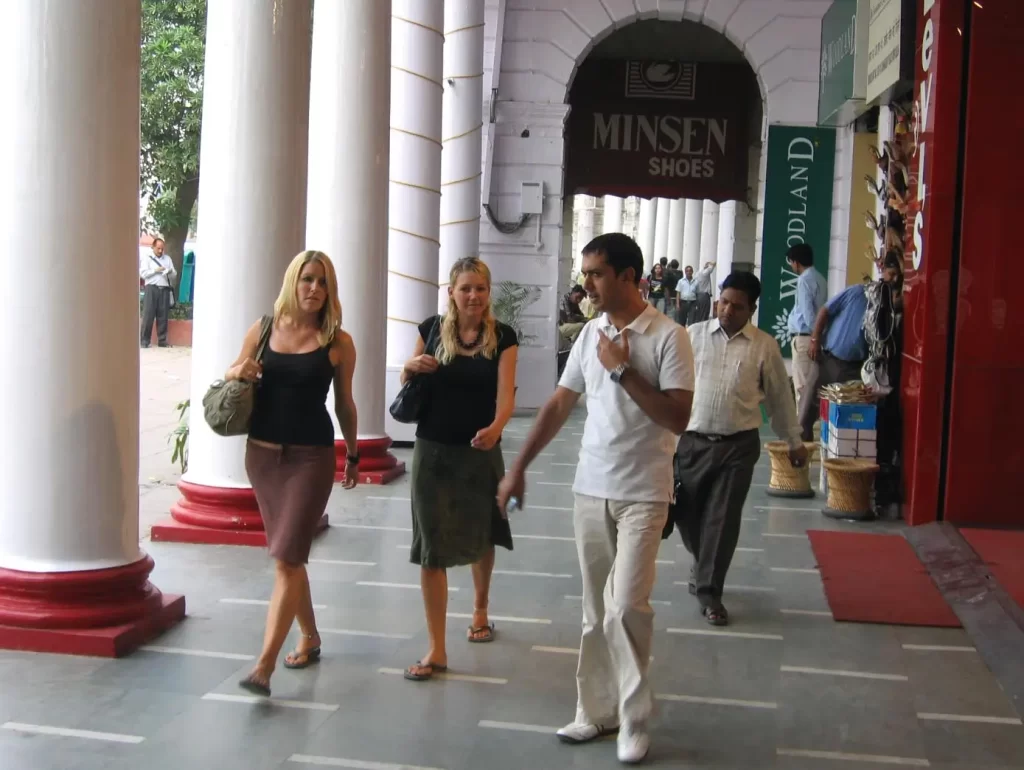
Source: Prato Flickr Account
Connaught Place is one of the prime commercial and financial centres in New Delhi, and it is famous for its nightlife and shopping. It’s an iconic place where beautiful white-coloured buildings built in Georgian Architecture take over the landscape views once you enter the arena.
This famous landmark was designed by Robert Tor Russell, a British Architect who worked as the Chief Architect for the Public Works Department of the Government of India.
Connaught Place got its name after the 1st Duke of Connaught and Strathearn. It is a must-visit place in Delhi with numerous shops, restaurants, and cafes.
Safdarjung Tomb
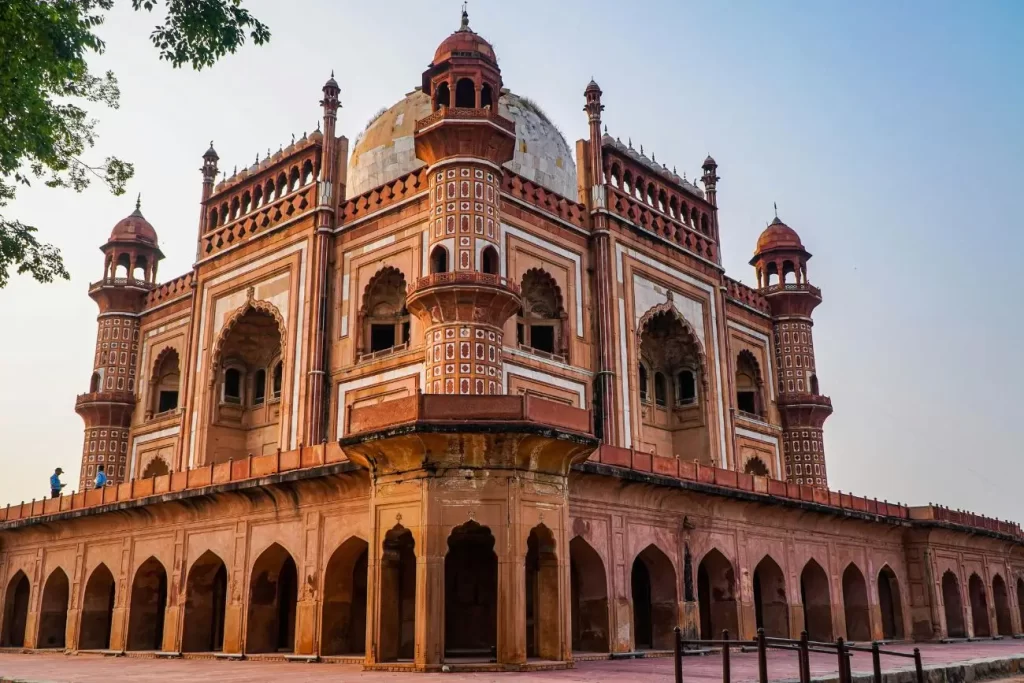
Built in 1754, the Safdarjung Tomb is one of the monuments from the past located in the Lodhi road region of Delhi. It is a popular tourist destination in the city, and its architecture resembles the Taj Mahal.
It’s the tomb of a famous figure from the Mughal court, Nawab Safdarjung. You can add this place to your itinerary on your Delhi city tour. It is also near Humayun Tomb, one of Delhi’s must-visit monuments.
Jama Masjid

Jama Masjid is part of Old Delhi and was built by Mughal Emperor Shah Jahan to signify the power and influence of Islamic rule in India. Its architecture is an example of authentic Mughal architecture. Jama Masjid is one of the largest mosques in India and is a popular place of worship for Islamic followers.
Humayun’s Tomb

Humayun, the first Mughal Emperor, laid the foundation of Mughal Architecture, and its zenith can be seen in the Taj Mahal of Agra. Humayun’s tomb is one of the first grand tombs of a Mughal emperor, with Charbagh-style gardens around it.
Red Sandstone was extensively used in the tomb, carving a path to be followed by the succeeding rulers. The tomb is dedicated to Mirza Nasir Al-din Muhammad (Humayun) and was commissioned by his wife, Bega Begum.
For the connoisseur of architecture, this place is a haven as numerous structures and small monuments lead up to Humayun’s tomb.
Hauz Khas Complex
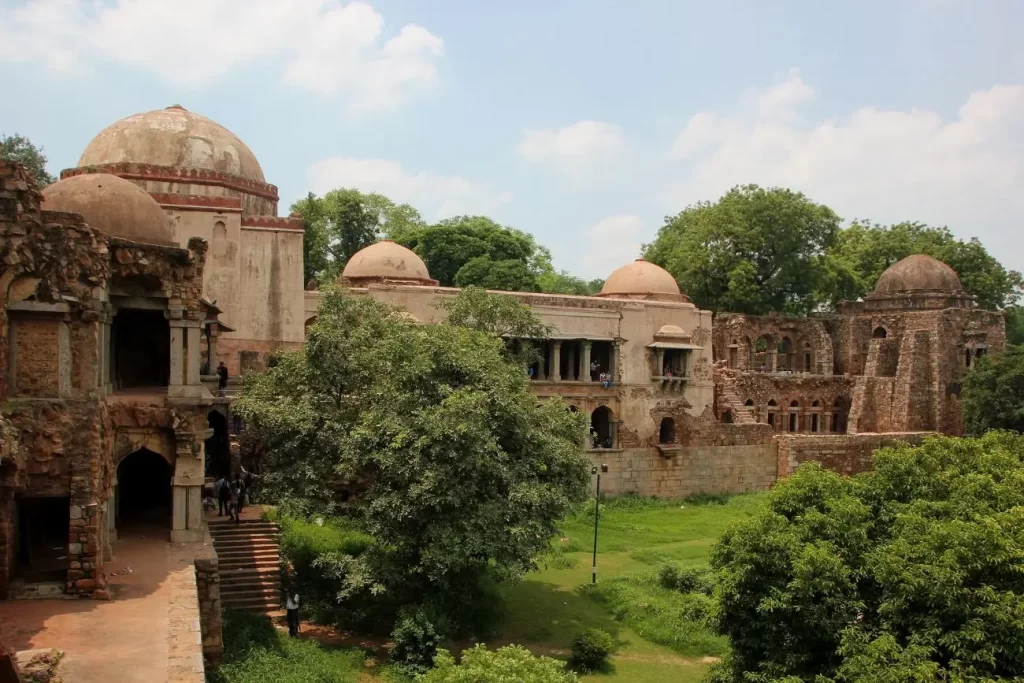
Hauz Khas complex is a popular tourist attraction filled with vibrant nightlife, an ideal shopping destination with some delicious food on the menu. Some excellent restaurants and cafes are too good for a quick bite. Delhi residents and visitors from India and other parts of the world genuinely love the vibe this place offers.
The iconic complex includes a 13th-century fort, mosque, tomb, and seminary. Remember, a beautiful water body is adjacent to the fort, built in the 1300s.
Hauz Khas Complex, also known as Hauz Khas Village, is a lovely place to spend quality evenings. Not to mention, there are numerous art galleries in the area with some mind-blowing Indian artefacts.
Akshardham Temple
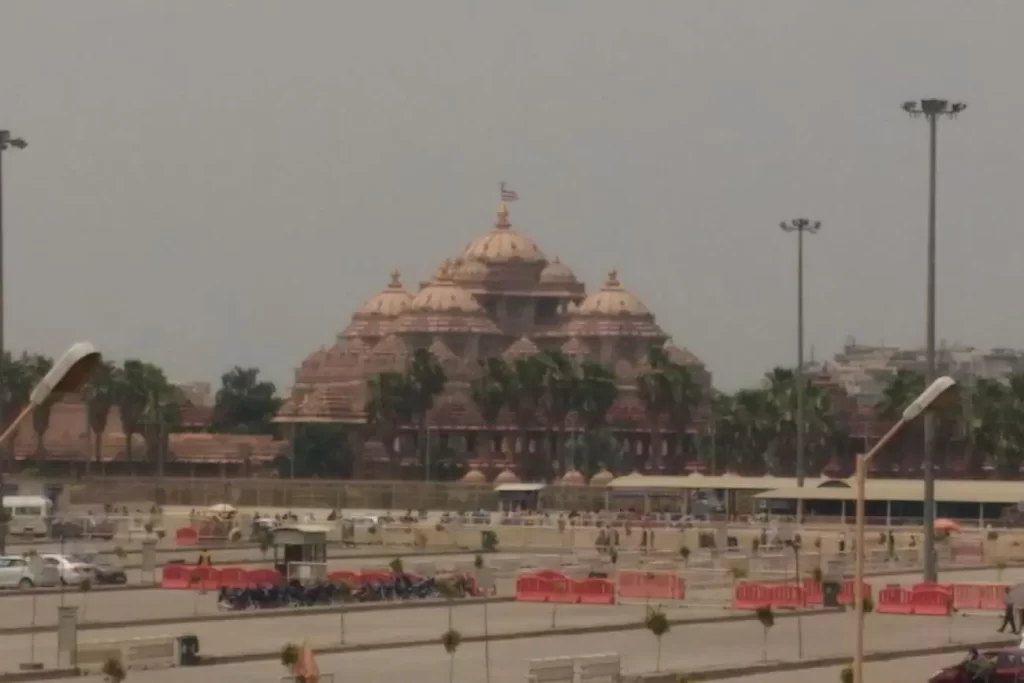
Akshardham is a spiritual place and a Hindu temple in Delhi. It is one of the iconic temples in India and has also been accoladed with the Guinness World Record for being the largest Hindu temple in the world.
The monument is primarily visited by Hindu devotees and foreign tourists who admire the architectural beauty of this temple. The temple’s design is based on Vastu Shastra and Pancharatra Shastra and has a Maru Gurjara architectural style.
It took many years to build this temple, and Rajasthani Pink Sandstone and Italian Carrara marble are used extensively.

